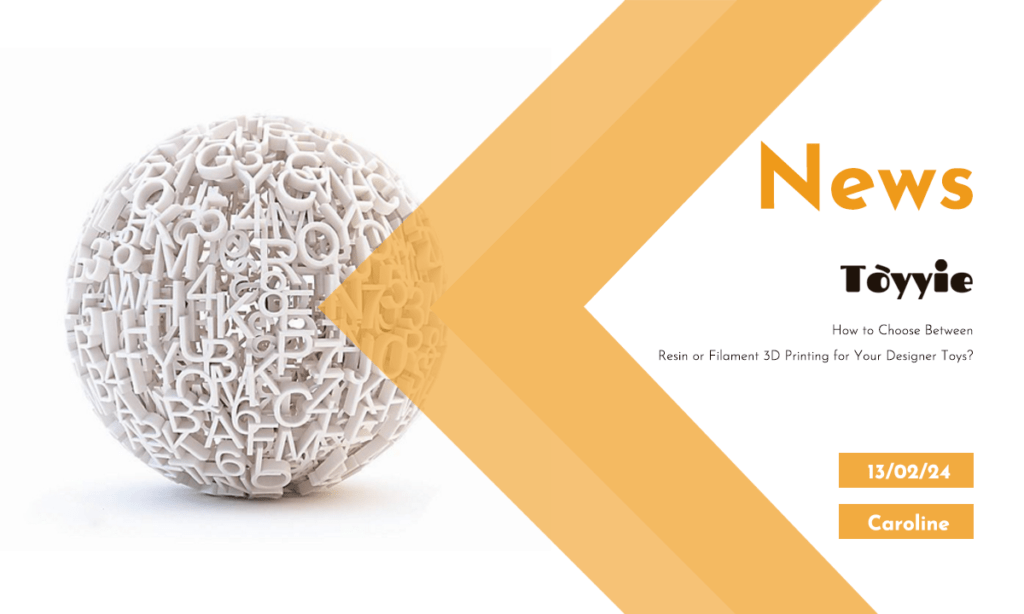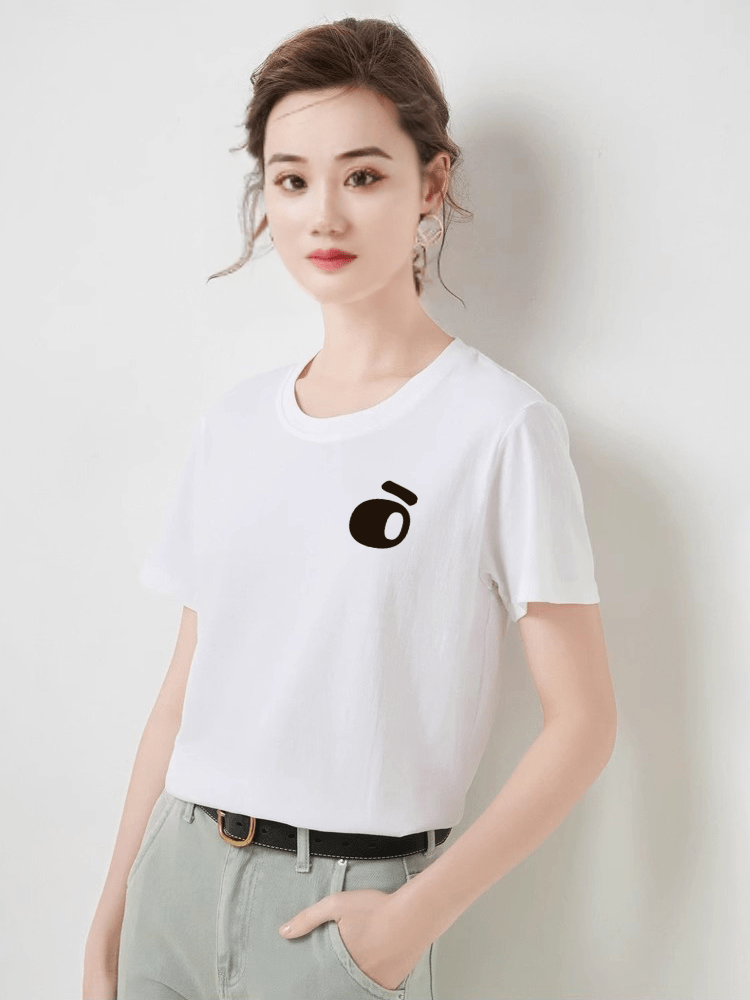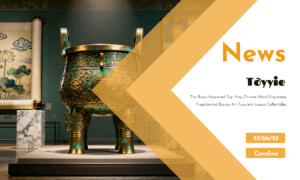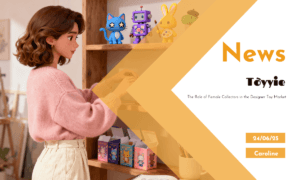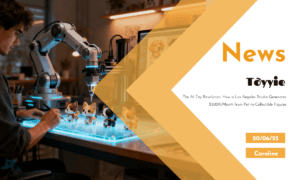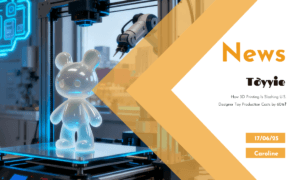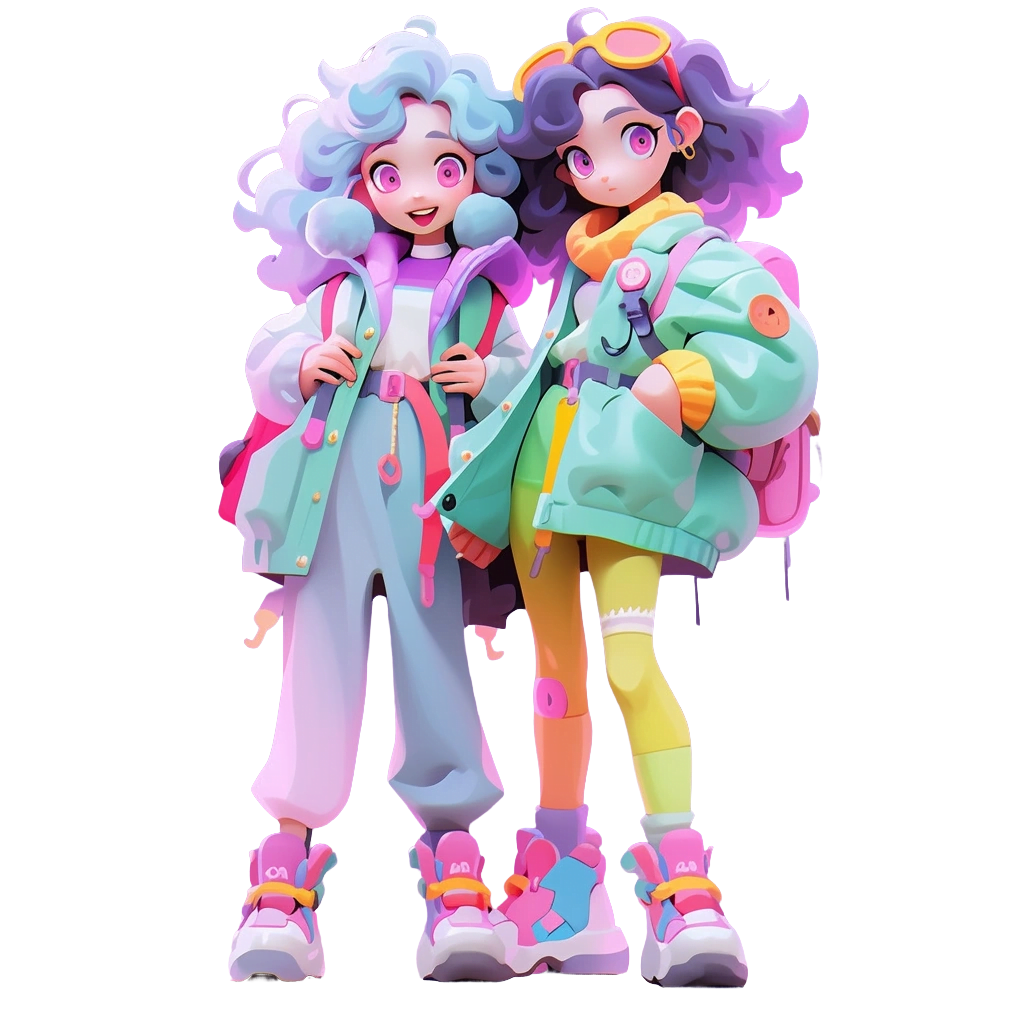Precision and Detail Comparison
Resin 3D Printing
- Layer Thickness Control
Resin 3D Printing allows extremely thin layer thickness, typically ranging from tens to hundreds of micrometers. This enables accurate reproduction of design models, making details more visibly clear.
Photocuring Technology
Using photocuring technology, Resin achieves high precision during the solidification process of each layer. Accurate control of the light beam ensures proper curing of every tiny structure, avoiding constraints seen in traditional manufacturing methods.
Representation of Tiny Features
Resin can represent features as small as a few hundred micrometers, crucial for detailing in small Designer Toy models. Whether it’s tiny carvings, textures, or small decorative elements, Resin brings out clear details.
Smooth Surface Finish
Due to the Resin 3D Printing process, the surfaces of Designer Toys are typically very smooth. This enhances the overall appearance and highlights details without the interference of visible layer lines
Three-Dimensional Feel of Details
The photocuring process ensures complete curing of each layer, creating a three-dimensional feel for every tiny element of the Designer Toy. This layer-by-layer construction brings real depth and dimension to each small element
Implementation of Complex Structures
Resin 3D Printing is not restricted by the limitations of traditional manufacturing methods, easily handling complex structures in Designer Toys, including intricate geometries, small connecting points, and gaps.
Filament 3D Printing
Visibility of Layer Lines
In large-scale Filament 3D Printing, visible layer lines may occur due to the gradual stacking of layers, creating perceivable texture in certain situations.
Suitable for Large Projects
Filament technology is suitable for creating larger Designer Toy projects, such as large models or sculptures. Its construction process is relatively straightforward, fitting larger volume printing tasks.
Cost-Effectiveness
Compared to Resin 3D Printing, Filament 3D Printing’s equipment and material costs are generally more economical. This allows creators to save costs when dealing with large-scale Designer Toy projects.
Printing Speed
Filament 3D Printing typically has a faster printing speed, aiding in completing large Designer Toy projects in a relatively short time. This is crucial for bulk production and meeting market demands.
Material Variety
Filament 3D Printing provides a wide range of material choices, including various colors, types, and characteristics of filaments. Creators can choose the appropriate material based on project requirements, increasing the diversity of Designer Toys.
Ease of Post-Processing
Due to the visibility of layer lines, Filament 3D-printed Designer Toys offer more flexibility in post-processing. Creators can choose to sand, paint, or apply other decorative steps to adjust appearance and add personality.
Precision and Detail Comparison
Common Types and Characteristics of Resin 3D Printing
Standard Resin
– General-purpose material suitable for various projects.
– High precision and surface quality.
– Can be post-processed with painting and decoration.
Transparent Resin
– Provides a transparent or semi-transparent appearance.
– Suitable for projects requiring a transparent effect, such as crystal or glass-like models.
– Smooth surface with clear details.
Flexible Resin
– Possesses a certain degree of flexibility and elasticity.
– Suitable for projects requiring bending or having elastic features.
– Smooth surface with well-maintained details.
Casting Resin
– Specifically designed for casting purposes.
– Suitable for creating casting mold models, usable in subsequent casting processes.
– High surface quality, suitable for precision models.
Ceramic Resin
– Contains ceramic particles, allowing the creation of ceramic-style Designer Toys.
– Suitable for projects requiring the appearance of ceramic materials.
– Smooth surface with clear details.
Variety of Filament 3D Printing
Thermoplastic Filaments (Common Types)
– PLA (Polylactic Acid): Easy to print, environmentally friendly, suitable for beginners.
– ABS (Acrylonitrile Butadiene Styrene): High strength, heat resistance, suitable for functional parts.
– PETG (Polyethylene Tereph thalate Glycol): Combines the advantages of PLA and ABS, high strength, UV resistance.
– TPU (Thermoplastic Polyurethane): Soft, elastic, suitable for making flexible parts.
Composite Filaments
– Contain other particles or fibers for enhanced materials.
– Common composite materials include wood filament, metal filament, carbon fiber filament, etc.
– Provide more appearance and performance choices, such as a wood-like appearance or metallic texture.
Flexible Filaments
– High elasticity, can bend and stretch.
– Typically used for making items that require a soft appearance or elastic characteristics.
– Used for producing insoles, phone cases, etc.
Nylon
– Wear-resistant, chemical-resistant, high strength.
– Suitable for making Designer Toys that require high strength and durability.
PET (Polyethylene Terephthalate)
– Transparent, high-temperature resistance.
– Suitable for making transparent or high-temperature-resistant Designer Toys.
PETT (Polyethylene Terephthalate Terephthalate)
– Similar to PET but with more gloss.
– Used for making Designer Toys that require a smooth appearance.
Cost and Benefits Comparison
Resin 3D Printing tends to be higher in cost, but the return in quality makes it suitable for projects emphasizing precision.
Filament 3D Printing offers cost-effectiveness, especially for large-scale production or beginners, making it more practical.
Project Requirements and Usage
Creators can choose Resin or Filament based on project needs, even combining the advantages of both. For example, using Resin for printing the detailed parts of Designer Toys and Filament for printing the foundational structures, achieving better results.
By flexibly employing Resin 3D Printing and Filament 3D Printing, Designer Toy creators can achieve a broader, innovative, and high-quality portfolio, meeting the diverse demands of the market and fans.
In conclusion
Both Resin and Filament 3D Printing offer unique benefits, and the choice depends on the specific requirements of the Designer Toy project. The flexibility of 3D printing technology empowers creators to explore new possibilities and deliver outstanding results. Whether opting for the precision of Resin or the cost-effectiveness of Filament, the world of 3D printing provides a realm of creativity waiting to be explored.
Thank you for reading this blog. If you have more questions about 3D printing or wish to share your experiences, feel free to contact us. Looking forward to meeting you again in the creative world!

